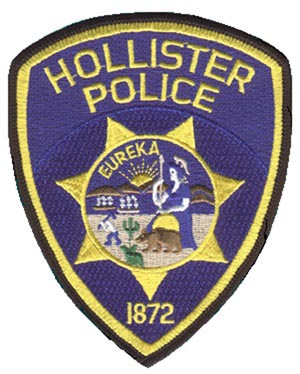The Hollister Police Department will conduct a DUI and driver’s license checkpoint Saturday, Sept. 25, from 6pm to 1:30am, at an undisclosed location within the city limits.
Hollister Police Department supports the new effort from the California Office of Traffic Safety that aims to educate all drivers that “DUI Doesn’t Just Mean Booze,” says a press release from the local department. Taking prescription drugs, particularly those with a driving or operating machinery warning on the label, can cause a driver enough impairment to result in a DUI charge. Marijuana can also be impairing, especially in combination with alcohol or other drugs, and can result in a DUI.
The deterrent effect of “High Visibility Enforcement” using both DUI checkpoints and DUI saturation patrols has proven to lower the number of persons killed and injured in alcohol or drug impaired crashes, police said. Research shows that crashes involving an impaired driver can be reduced by up to 20% when well-publicized proactive DUI operations are conducted routinely.
DUI checkpoints are placed in locations based on collision statistics and frequency of DUI arrests, affording the greatest opportunity for achieving drunk and drugged driving deterrence, according to police. Locations are chosen with safety considerations for the officers and the public.
Officers will be looking for signs of alcohol and/or drug impairment, with police checking drivers for proper licensing, says the press release. When possible, specially trained officers will be available to evaluate those suspected of drug-impaired driving, which now accounts for a growing number of impaired driving crashes. Drivers should be aware that taking medication—whether prescription or over-the-counter—and drinking even small amounts of alcohol can greatly intensify the impairment effects.
Studies of California drivers have shown that 30% of drivers in fatal crashes had one or more drugs in their systems, police said. A study of active drivers showed more tested positive for drugs that may impair driving (14%) than did for alcohol (7.3%). Of the drugs, marijuana was most prevalent, at 7.4%, slightly more than alcohol.








